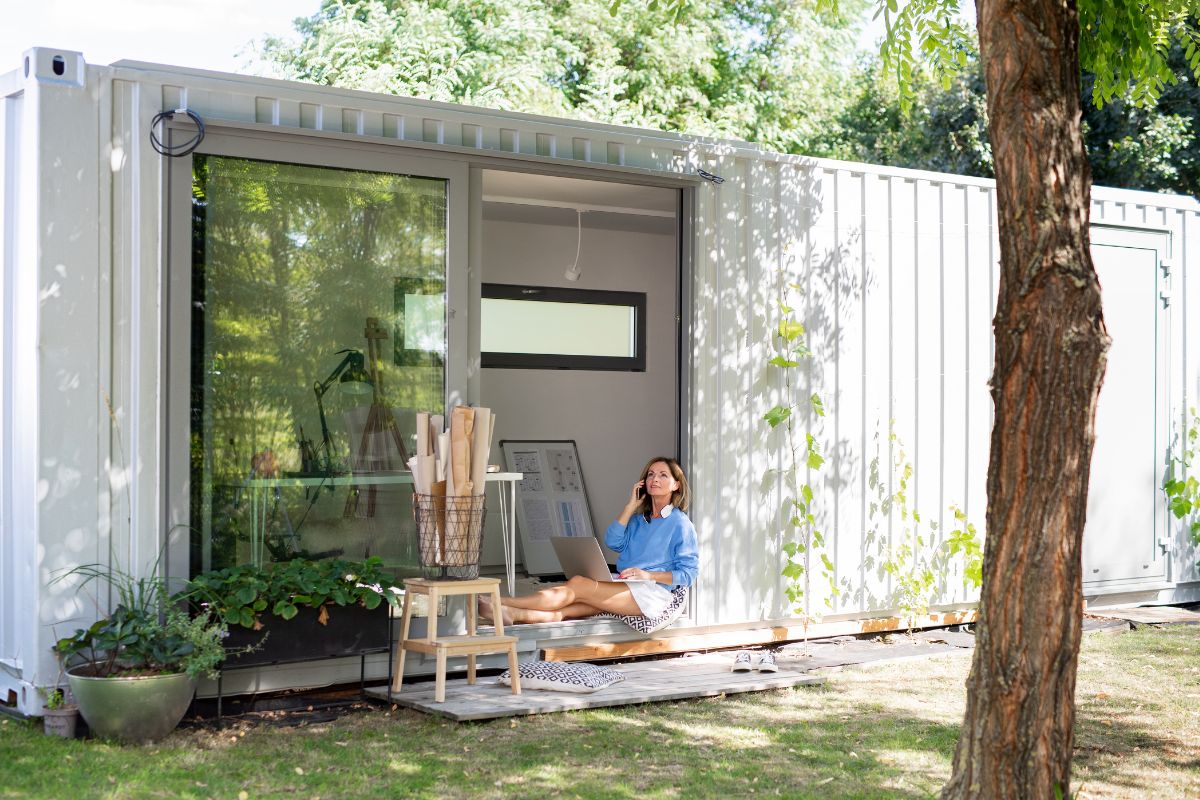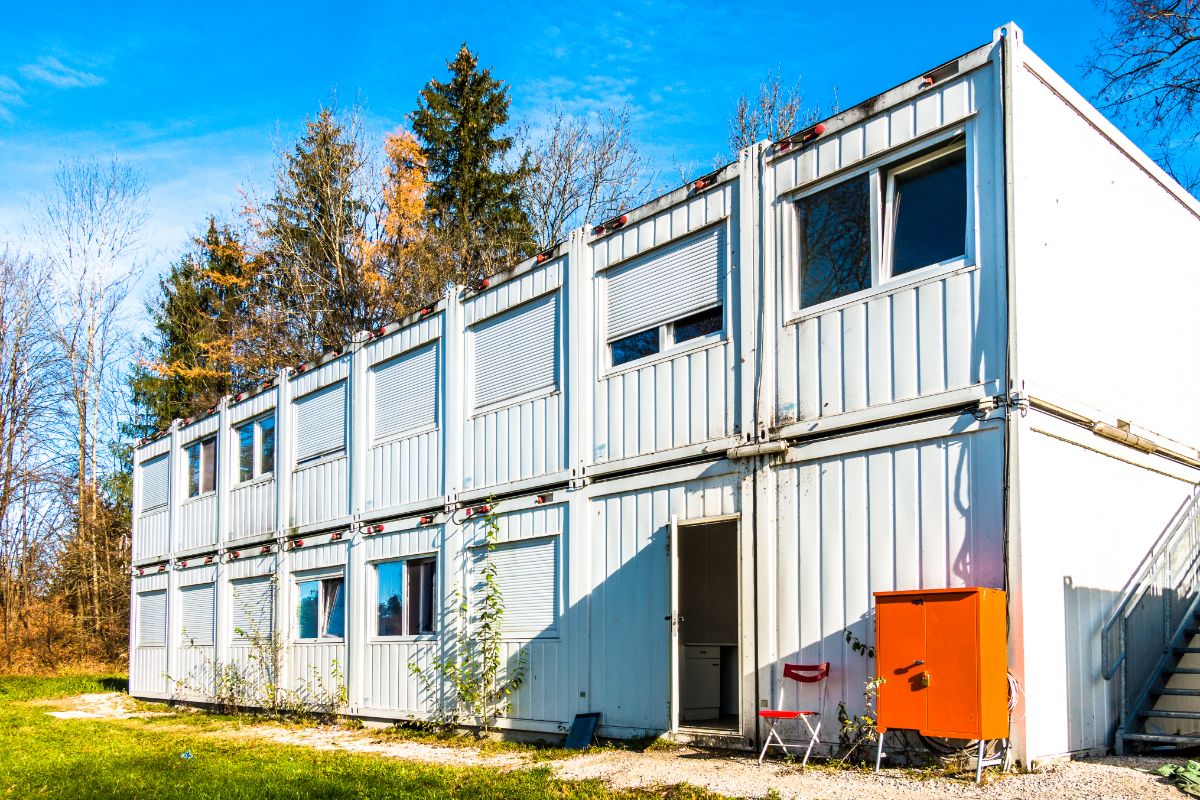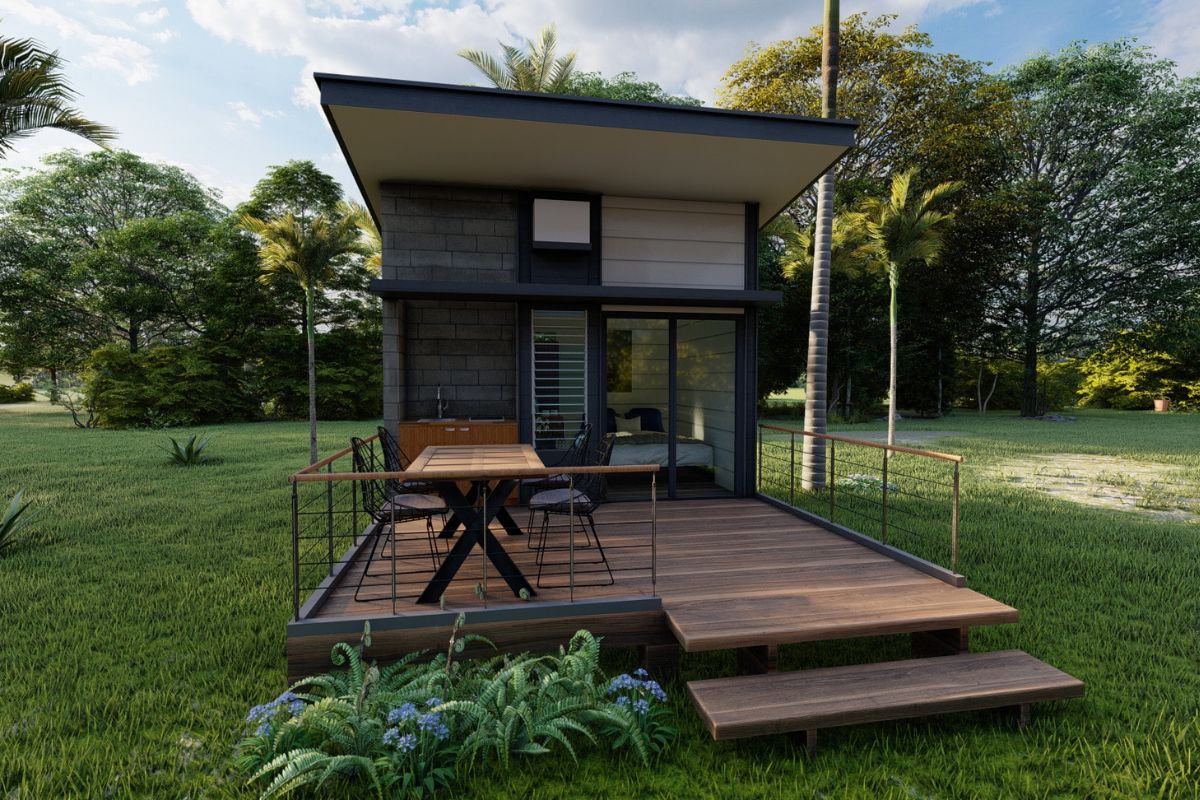In recent years, container homes have become a growing trend with home designers and builders.
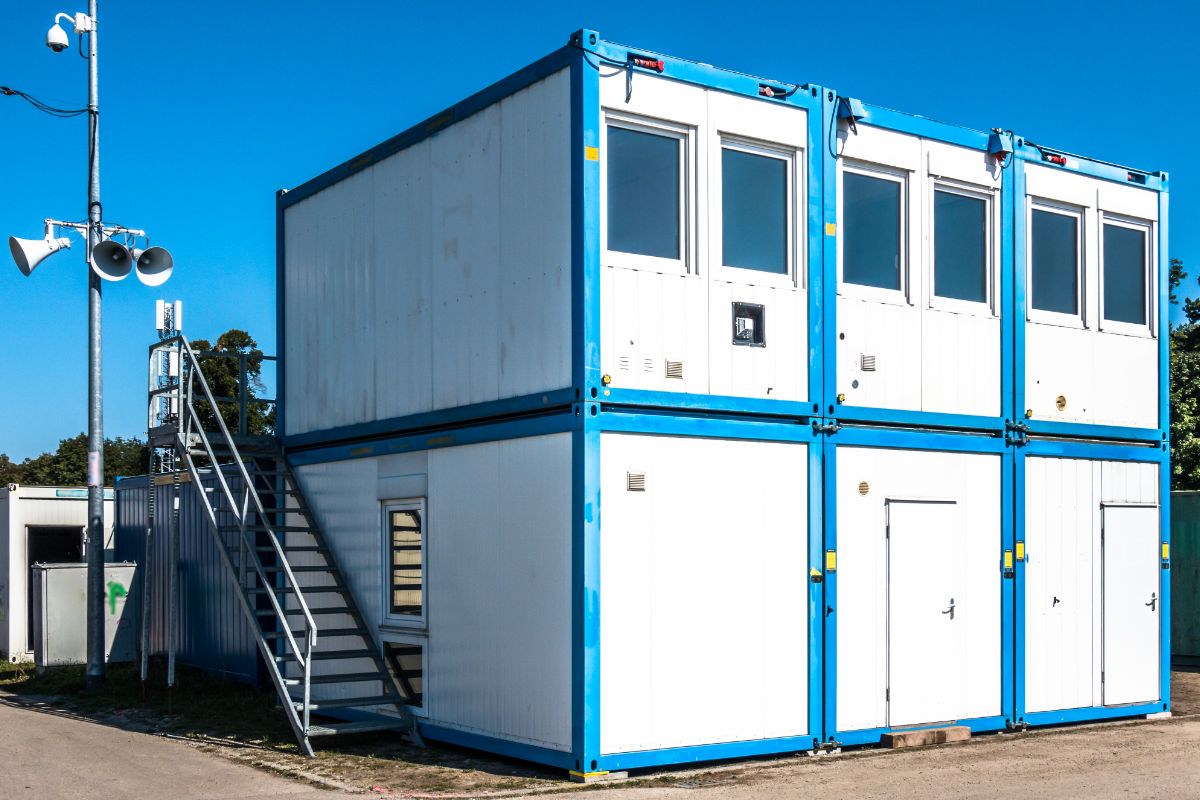
Across the world, architects and developers are using premade shipping containers to build the shell of their latest project – but after so many years of popularity and success, who came up with the idea of the container home in the first place?
Here, we are going to be diving into container homes and their history to learn more about the minds behind this genius architectural idea. If you want to learn more about container homes and where they came from, this is the place for you.
Check out the article below to have all your container home questions answered!
What Is A Container Home?
First, let’s define what a container home actually is. Container homes are houses that are built up from steel shipping containers. Shipping containers are large, rectangular boxes made from steel. They come in different sizes but the most commonly used are:
- 8×10 feet
- 8×20 feet
- 8×40 feet
These shipping containers were first designed and built for transporting goods around the world but over the years, designers and architects have found other uses for these containers. This includes building homes in various sizes.
Container homes can range from small cabins built from a small shipping container unit, to huge buildings built by stacking and fusing numerous shipping containers together.
Some container homes are not even used as homes – they are used as public showers, offices, food trucks, and more.
Container homes are associated with two key movements in architecture and home design – the tiny house movement, and the sustainable living movement.
- The tiny house movement is an architectural movement that involves downsizing living spaces to make simplified homes. It began as a wave in the 1970s, taking inspiration from traditional North American shotgun shacks and cabins. However, after the Great Recession between 2007 and 2009, the tiny house movement really took off as there was more attention drawn to affordable and ecologically friendly living.
- The sustainable living movement is a lifestyle trend that has grown over the past few decades. Due to issues like climate change and plastic waste, more people are trying to increase their recycling by reusing materials and objects for other purposes. This can range from upcycling furniture, reusing fabrics from fashion fashion clothing to make new objects, and even using unused shipping containers to make homes.
Despite only recently becoming a trend in the late 2000s and early 2010s, shipping container homes have been around for much longer. So much so that it’s difficult for us to say who really invented the container home.
There are actually several names you can point to – so who was involved in inventing the container home and popularizing this architectural form?
The History Of Container Homes
Container homes are a relatively ‘new’ trend seen across the globe but the history of container homes, and the shipping containers they are made from, have a longer and complicated history than you would expect.
The Early Beginnings Of Shipping Containers
Before shipping containers were invented, international trade was a slow process. Goods like food, spices, materials, and more, were piled onto ships without any standardized containers.
This meant that a ships’ hold could be packed with cargo stored in all kinds of crates, barrels, sacks, bales, and more.
These holds also had to be filled by hand by people carrying or lifting the cargo by hand – and considering the average ship could carry up to 200,000 individual pieces of cargo, this was obviously a lengthy process.
Even with 200,000 pieces of cargo aboard, the average ship was never used to its fullest potential capacity. As a result, more ships had to be used to transport all the goods – resulting in more labor, time, and higher costs.
This was a key issue during the first and second industrial revolution. Ports would become full with ships stuck due to blockages and delays due to how long it took to load and unload cargo from a single ship.
As more goods were being produced and trade continued to expand despite these issues, manufacturers and traders began to look for more efficient ways to transport goods to help maximize profits.
This is where the visionary Malcolm McLean comes in. Malcolm Purcell McLean was an American businessman born in North Carolina in 1914.
By 1934, McLean was able to launch his own transport business with his brother and sister, via a fleet of trucks, where he worked as one of the drivers delivering goods from North Carolina to docks in New Jersey.
During this time, he witnessed the cargo issues of trade ships first-hand. These issues also began to hurt his business – by 1950, transportation trucks like the ones used in McLean’s fleet were affected by weight restrictions and fees.
His drivers were often fined for piling too much cargo into their trucks and breaking the weight limitations set in place by law. Because of this, McLean began to search for new ways to efficiently transport cargo – and eventually came up with a solution.
The idea was standardized sized trailers that could be filled with cargo and then loaded onto ships by the hundreds.
It was a revolutionary idea that changed the face of McLean’s business (the truck fleet turned into boats instead) and later, the face of international and global trade. McLean teamed up with engineer Keith Tantlinger to bring his idea to life.
The first shipping container was designed, tested, and refined time and time again until they became the container we are familiar with today. The shipping container was finally patented in 1956 and known as the intermodal container.
The rest is history – the shipping container became a huge international success over time, was a key introduction that pushed for globalization, and made Malcolm McLean a very rich man.
The Rise And Fall Of Shipping Containers
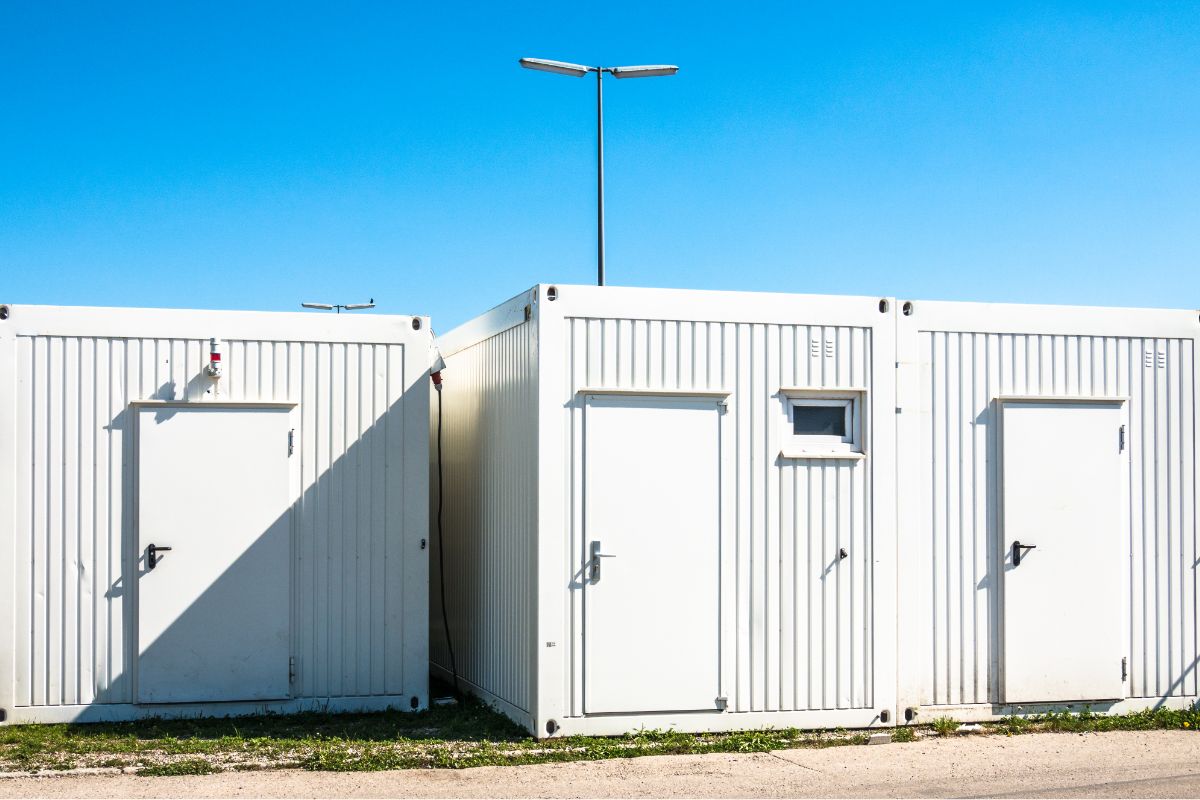
Not everyone was happy with McLean’s new invention. In the early 1970s, many dockhands and workers went on strike in protest against McLean’s shipping container.
Because the shipping container required less manual labor to load and unload ships, many dock workers were at risk of losing their livelihoods. Their strike disrupted the shipping industry and for a time, the shipping container’s rapid expansion began to slow down.
However, this was just a blip. Dockside unions were paid severance agreements funded from the financial savings the introduction of shipping containers brought, and the shipping container continued to revel in its success.
McLean’s shipping container was a huge component in the Vietnam War as the US used them to ship important equipment from the US to ports all the way in Japan.
This landed McLean’s company with a huge deal, and the US was able to ship way more supplies to Vietnam to escalate the war there. As the years went by, shipping containers began to change.
More were made in different dimensions and sizes so ships of various sizes could carry shipping containers.
This is how we now have the range of shipping container dimensions we have today and this only contributed to the rapid increase of globalization – but this came with an issue.
This was the surplus of shipping containers taking up valuable space in ports around the world. Around the world, countries began to rely on international trade rather than domestic produce.
This meant that more and more docks and ports were taking in containers and containers filled with cargo – and those containers were stacked up at port and just left to rot.
Companies found it was much cheaper to simply abandon containers after use rather than shipping it back from its destination. They could just purchase one for a lower cost from their supply and use that for their next shipment. The result?
Stacks and stacks of empty shipping containers left at ports that had no use for them while more new shipping containers were continually being produced elsewhere in the world.
This has led to a huge surplus of shipping containers that we are still seeing today. We are not sure just how many containers there are around the world.
Some numbers estimate 17 million, others are higher at 65 million, and some go even further with estimations of 170 million and 530 million.
Granted, these higher numbers may be taking into consideration those used in other projects and those lost at sea, sunk to the bottom of the ocean with their cargo still inside.
What we do know is that if you visit any major port in any country, you are bound to see a shipping container ‘junkyard’ filled with abandoned containers companies don’t want to pay good money to ship back home.
Architecture: A New Chapter For Shipping Containers
There was one moment in time when the world was faced with a shortage of shipping containers. During the height of the COVID-19 pandemic, global trade all but stopped in some countries.
This meant that freighters and ships were not leaving home and companies that did need shipping containers could not get them shipped in from Asia, where most shipping containers are now manufactured.
Because of this, there was a spike in demand for shipping containers but, for the most part, the world has too many shipping containers.
Once the height of the COVID-19 pandemic declined, so did the demand for shipping containers and before long, they were in surplus once more. The surplus of shipping containers is a big issue for docks around the world.
To help come up with a solution for this surplus, creative minds began to look for other ways to use shipping containers outside of their intended use.
The containers could not be simply melted down and reused because that method required a lot of equipment and labor, most of which companies were not willing to pay for – it was just cheaper to let them rust away into nothing.
Despite this, docks and ports could not wait for the years it would take for the containers to disintegrate naturally. They needed a solution now – but what? The answer soon became obvious – architecture.
Eventually, some genius took one look at the containers and thought that these modular, steel-framed containers could work as small buildings. In fact, many geniuses have had the idea to turn shipping containers into buildings that could be used for multiple purposes.
No one knows who exactly first came up with the idea but there are a few important names we will go into later who all contributed to the rise of the container home.
For now, just know that shipping containers were beginning to be sold off for low prices to anyone who wanted them. These people would take the containers away and begin to customize them for their own purposes.
Many built homes. The rise of the container home is often associated with two other important movements in architecture and home design – the tiny living movement and the sustainable living movement (see above for more details on both.)
Container homes fit the needs of both movements perfectly – their compact size made them ideal to be turned into small homes with limited space, and reusing shipping containers prevented them from going to waste.
Both these movements really gained traction after the 2009 Great Recession. There was a high demand for affordable homes and increasing awareness of sustainability at this time.
This contributed to the rise of the container home but as the 2010s progressed, so did classic container homes. Designs became more complex.
Original container homes were no bigger than a single container – now they had second stories or were welded together with other containers to create large family homes.
Some designs even got rid of the classic corrugated wall panels synonymous with shipping containers, removing the urban and industrial style of container homes to make them suit other architectural styles.
As a result, container homes eventually outgrew the tiny home movement and are now used to build luxury homes across the world. Not all containers were being turned into houses or homes. There are many ways containers were adapted for other architectural uses, including:
- Laboratories – These small, contained laboratories allow more universities and schools to expand their curricula and introduce students to more practical learning.
- Markets – Some new indoor markets are made from rows of shipping containers. Each market stall is given its own container. During the night, the containers can all be securely locked so stall owners can leave their stall without worrying about theft or damage. A great example of this can be found at the Dordoy BAzaar in Bishkek, Kyrgyzstan.
- Stages – In 2012, German architect Stefan Beese created a large viewing deck and lounge area using shipping containers. This replaced the usual scaffolding structures used at live events. To see one in action, check out the Voodoo Music Experience, New Orleans.
- Shelters – Shipping containers can provide emergency shelter to those in need during extreme weather events like hurricanes, and other disasters. Some places also use shipping containers to provide temporary relief for the homeless.
- Temporary Hospitals – During the COVID-19 pandemic, many countries converted shipping containers into temporary hospitals to provide intensive care of COVID-19 patients. This helped relieve the pressure from local hospitals in many areas.
So, the future is looking bright for shipping containers. Not only are they still being used for shipping purposes, but they have expanded beyond their primary use.
They are now used to build a wide range of buildings for various purposes – shops, shelters, hospitals, and even homes.
Who Came Up With The Idea Of Container Homes?

So, container homes really became a popular architectural trend in the late 2000s and early 2010s, but that doesn’t mean that container homes were invented then – so who made them?
As we’ve mentioned a few times in this article, there is no named inventor of the container home but there are some names we can mention as potential inventors. Check them out below.
Philip Clark
In 1987, a man by the name of Philip C. Clark filed a patent for: “The method of converting one or more steel shipping containers into a habitable building.”
Two years later in 1989, the patent was approved and legally, Philip Clark became the inventor of the container home.
It also served as the first official recording of a container home – however, this doesn’t mean that Philip Clark is the first ever person to ever come up with the idea of, yet alone actually build and invent, a container home.
There’s actually evidence that container homes already existed before Philip Clark filed his patent in 1987. So, just because he’s the man who patented the container home first doesn’t mean he invented the idea.
The Space Rage Buildings
The go-to example of container homes existing before Philip Clark’s 1989 patent is the 1985 movie Space Rage. In the movie, parts of the sets included buildings made of shipping containers.
For some people this is enough evidence to point that container homes were already an idea before Philip Clark even filed for the patent.
In this case the credit could either go to Space Rage’s director Conrad E Palmisano, or the art directors which includes William Pomeroy and Cliff Cunningham.
However, you can still argue against this being a legitimate conception of shipping containers being used in the real world as homes for real people.
At the end of the day, Space Rage is just a movie and the container homes in the set are just that – set pieces. They aren’t supposed to function as real homes.
It’s like saying that the ice cream machine prop in The Empire Strikes Back counts as a real computer memory core because that is what it was used as in the movie – except it is not a computer memory core, it’s just an ice cream machine.
So, the container homes in Space Rage aren’t real container homes. They’re just a cool idea for a futuristic setting for a space-western 80s movie.
Nicholas Lacey
A real contender for the title of ‘container home inventor’ is the British architect Nicholas Lacey. In the 1970s, Nicholas Lacey wrote a thesis around the concept of using shipping containers to create habitable homes.
However, it wasn’t until much later that Nicholas Lacey could bring his vision to life. In 2000, Lacey was involved in the building of Container City I, a large habitual space with 12 habitable studios built on London’s Trinity Wharf.
It was built on behalf of the company Urban Space Management, which aimed to regenerate urban areas for modern use.
The old warehouses and buildings on Trinity Wharf were converted to become a cultural hub with workshops and studies for exhibitions and events.
Lacey was a part of building Container City I which included various shipping containers stacked upon one another in strangely shaped layers, connected with open walkways. It’s an architectural wonder – but not exactly container homes.
Although you could easily convert the building into residential flats, they are used as studio spaces instead. For many, this is enough evidence to suggest that Nicholas Lacey should be the one credited with the invention of the container home.
Although it took him years to bring his thesis to life in the form of Container City I, he clearly understood and argued back in the 1970s that shipping containers could be transformed into habitual spaces.
It’s not like he said it as an off the cuff idea and never took it anywhere – he built his entire thesis around this idea.
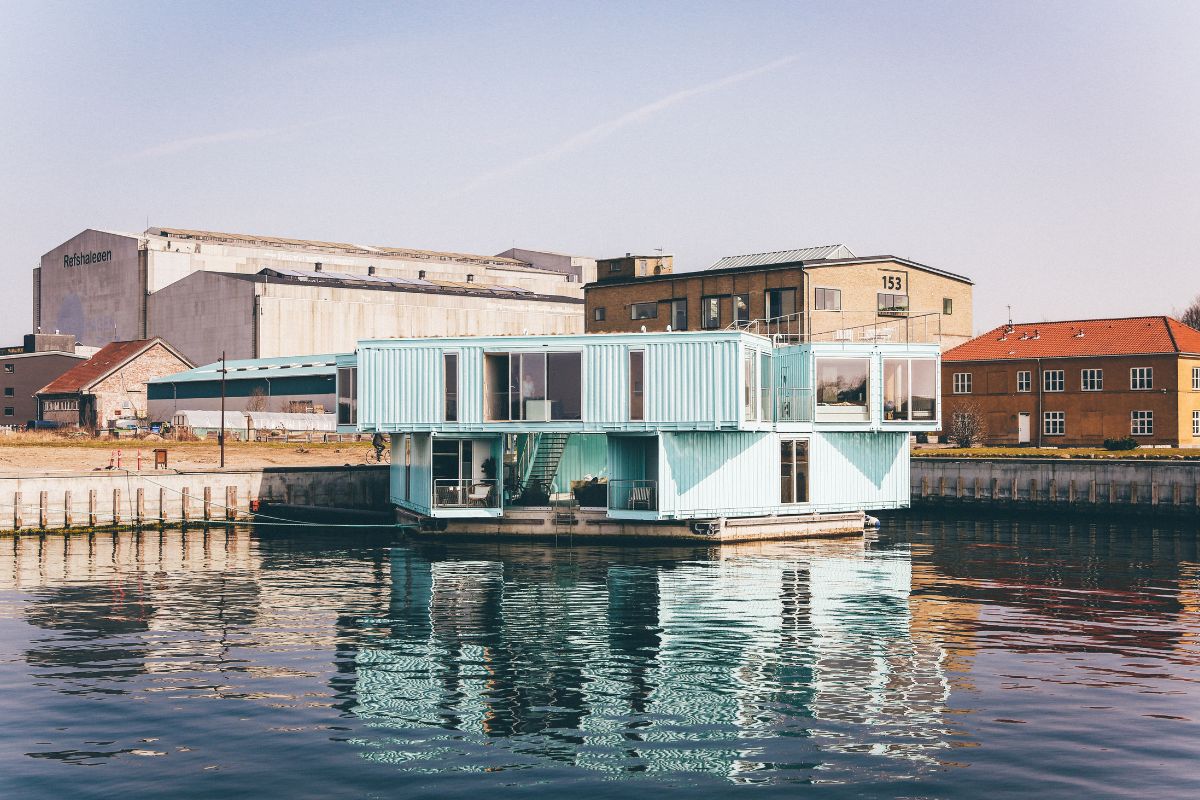
Peter DeMaria
For those interested in modern container homes, this name may already be familiar to you. Peter DeMaria is an architect from California often credited with beginning the container home trend in the late 2000s.
Although he did have a patent nor any evidence of coming up with the idea before Lacey in the 1970s, he still plays an important role in the invention of the container home and bringing it to the attention of today’s audiences.
He is also credited with building the first container home that met the National Uniform Building Code, making it legally fit for human inhabitation – and as a result, many see him as the creator of the first real shipping container home (Clark never really did build any container homes, and Lacey built public studios).
His container home, the Redondo Beach House, was officially finished in 2007.
The Miller Family
Peter DeMaria may have built the first US container home and started the late 2000s/early 2010s container home trend – but it’s the Miller family who really popularized the idea globally in 2014.
In 2011, Queensland Australia was hit by a series of floods which devastated the area. Among those who lost their homes was Todd and Diana Miller, and their two young girls.
When the couple decided to rebuild their home, they chose to build it out of shipping containers. When asked why the Millers chose shipping containers to build their new home, the answer boiled down to two main reasons – speed, and durability.
The Millers had lost their previous home due to flooding and needed a new one as soon as possible. They also wanted this new home to be more durable and flood resistant, and they believed shipping containers were the answer to both requirements.
They started out planning the layout of their new home using cardboard boxes and later, purchased the shipping containers they needed and got to work. They used the containers to build a ground floor that would not be inhabited.
Instead, it could be flooded again but not affect the rest of the house which sat above it. The project gained traction and notice in the area as the Millers began to build a 6,000 square foot mansion using 31 separate shipping containers.
The project, later called the Graceville Container House, appeared on the popular Australian television show, Grand Designs Australia and was broadcast around the world in 2014. From there, the container home trend boomed.
More and more places began using shipping containers to build not just their homes but their business offices, cafes, bars, and so much more.
For many people, the Millers’ home was their first introduction to the concept of container homes and while they may not be the first to have come up with this idea, they are certainly the architects most people think of when they think about container homes.
The Benefits Of A Container Home
Over the years, shipping containers have become a more popular choice for those seeking to build their own tiny homes.
According to Market Watch, shipping container homes are predicted to grow by 6.5% between 2019 and 2025 – so why are people choosing to build homes out of shipping containers? What benefits could they offer? Let’s find out!
Affordability
One of the key benefits of container homes that makes them so appealing for home designers is its affordability.
Compared to the cost of building a traditional home, which requires lots of material and labor, container homes are way more affordable to build and purchase.
While the cost of a shipping container will vary from place to place, you can find a 20ft container for between $1,500 and $3,000. A 40ft container is not that much more expensive – they can be purchased at prices between $2,500 and $4,500!
Once you include the cost of decorating a container home and making it fit for habitation, it’s still much more affordable than your traditional family home.
In 2022, the average house cost nearly $300,000 to build – while a container home can be built with a budget between $20,000 and $80,000, depending on the size.
This is a massive difference in price which makes container homes incredibly attractive for home designers and builders.
Availability
Another attractive advantage to building your home out of shipping containers is the availability of materials.
Shipping containers are everywhere. It’s estimated that there are millions of shipping containers around the world, with more being produced thanks to the rapid development of global trade.
This has led to the surplus of shipping containers we now see today. So, there is no shortage of shipping containers out there for sale – and this helps drive costs down even more. Anyone around the world can easily buy a shipping container.
They are sold in pretty much every country in the world. This makes them a global material home designers and builders can use on every continent.
Other materials sometimes have to be sourced from far away countries and waiting for those materials to be prepared, shipped in, and transported to your worksite can slow down production and increase the length of time for your project.
However, with shipping containers, they can easily be transported from your local supply to your work site. They are built for easy transport after all!
Customizability
Shipping containers are all pretty much the same although they vary when it comes to length and height measurements. They are made with a modular design, making them simple to manufacture and easy to stack side by side, one on top of the other.
Due to their relatively simple design, it’s easy to customize your shipping containers to fit your purpose. This is why shipping containers are used for such a wide range of purposes in architecture.
While you do need to add reinforcements when adding additional windows and doors, they can be stacked to make additional floors to a home or joined to other containers side by side to increase your floor space.
Durability
Most shipping containers are made from corten steel. Corten steel, or weathering steel, is a type of durable and strong steel used for a range of projects.
The reason why this steel is used to make shipping containers in the first place is due to its amazing properties. This type of steel uses a deliberate layer of rust to help protect the inside of the container from elements that could damage it.
Although this doesn’t mean that shipping containers are completely rust-resistant, it does increase their lifespan and provides additional protection from rust, wind, and other elemental damage.
This makes them incredibly hardy and great for harsh environments – after all, these shipping containers need to survive exposed voyages across oceans!
They are also incredibly strong, allowing them to be stacked up to nine times on top of each other. This means they are capable of handling large loads like furniture and people – perfect for homes.
Sustainability
This benefit is largely due to the surplus of shipping containers left to rust slowly in ports and docks. Instead of letting these containers disintegrate into nothing, they can be recycled into container homes.
This means that to make a container home, you are not using up more of the Earth’s natural resources. You are also limiting your home’s carbon footprint by avoiding shipping or mining that can spew carbon dioxide into the atmosphere.
Instead, you are using a locally sourced container that is already made for you!
Of course, you still need to reinforce and design your container home and this does require additional resources and materials – but no more than your average traditional home. This means that in comparison, container homes are more sustainable!
The Disadvantages Of A Container Home
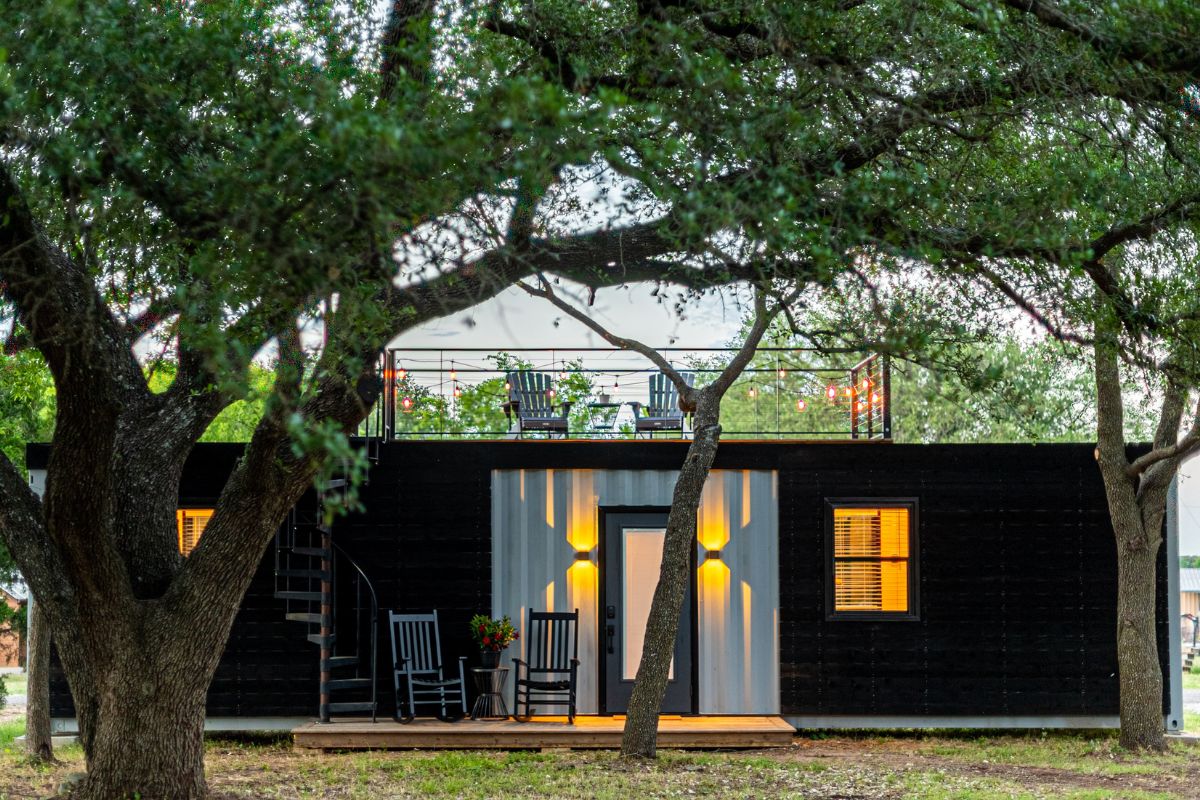
So, if there are so many benefits to container homes, why aren’t more people using them to build modern houses instead of traditional materials?
Nothing is perfect, and there are plenty of disadvantages to container homes that puts some architects off using them.
So, let’s take a look at them to understand why, despite this seemingly groundbreaking invention, a lot of people are still not sold on the container home idea.
Temperature And Humidity Control
Steel conducts heat – everybody knows that, and when it comes to container homes, this proves to be a bit of an issue. When left in hot environments like in direct sunlight, shipping containers can become extremely hot.
Temperatures can reach 140 degrees Fahrenheit (or 60 degrees Celsius) – definitely unsuitable for a home. What’s worse is that during nighttime, temperatures can plummet to below -21 degrees Fahrenheit (or -29 degrees Celsius).
This is why when companies ship products in shipping containers, they insulate their products and the insides of the containers to help project their cargo from such extreme temperatures.
The same needs to be done to shipping containers to make them suitable for habitation. This can crank up the costs of making a container home as so much careful planning and designing needs to be done to ensure humans can live comfortably inside these containers.
Weak Roofing
One major structural issue with using shipping containers to build homes is their roofs. While shipping containers are strong enough to be stacked one on top of another, the strength here comes from the corners of the containers.
This is where most of the weight from the containers placed above them are taken – but this won’t work if you are building a container home. Additional structural support needs to be added to support the roof.
Whether you are planning to build a second story, a roof-top garden, or just leave it bare – the roof of the shipping container needs extra support to make it suitable for habitation and to avoid further damage. Even a layer of snow settling on top of a container can be damaging.
Lack Of Flexibility
Containers are great for building square or rectangular homes – but if you want your container home to include circular or arched areas, you will need to spend a lot of time working on your project to get the dimensions right.
The same goes if you want to combine shipping containers together to make larger spaces or additional floors. It takes a lot of time and planning, and this can also be expensive.
This is why most container buildings stick to the original dimensions of the container itself. It’s much easier to work with, less time consuming, and more cost-effective.
Building Permit Issues
Finally, this issue with container homes is not necessarily the fault of the containers themselves. Instead, it’s a fault with the bureaucracy that comes with building your own home.
In many places around the world (including several states) require you to have several permits before you can start building a house of a certain size.
However, because container homes are a relatively new phenomenon, a lot of places are not sure how to approve these kinds of projects. This can make getting the right permits incredibly difficult so you can build a container home.
Some places, like Texas and California, have regulations in place for container homes that are much easier for developers to follow but elsewhere, the rules are sketchy.
Some developers prefer to avoid the hassle of trying (and most of the time, failing) to get the right permits to make their own container homes.
Final Thoughts
When Malcolm McLean invented the shipping container in 1956, he probably never expected them to be used to make sustainable homes, not even a century later.
Although shipping containers were originally designed for shipping cargo and nothing more, creative minds and visionaries have seen the true potential of these steel containers.
Although there is much debate over who can be called the true inventor of the container home, there’s no doubt that the idea really took off in the early 2010s.
The benefits of using shipping containers to make homes – the lower costs, the improved sustainability, the impressive durability – all led to many home developers choosing to build the frames of their next projects out of steel shipping containers.
Now, you can find many homes, large and small, made using shipping containers. Even businesses and offices are sometimes built using a shipping container as its base frame – and this is just the start of this new era of architecture!
We hope this guide has helped you better understand the origins of container homes and the minds behind their creation. Thanks for reading!
- What Is The History Of The Tiny House? - June 9, 2023
- Who Invented The Container Home? - June 9, 2023
- 6 Fabulous Tiny Homes For Sale In Massachusetts To See How You Could Be Living - May 8, 2023




